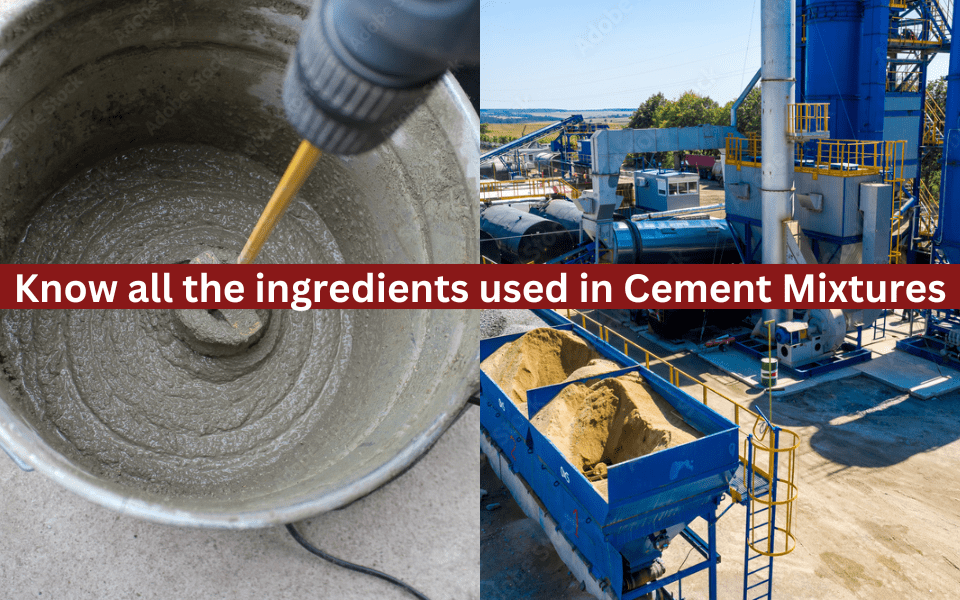Cement is the end-product of a combination of 8 main ingredients that go through the cement production process. These main ingredients are in general extracted from the materials limestone, clay, chalk, sand, marl, shale, bauxite, and iron ore. It is one of the main ingredients in the concrete mix used for construction. SD Conmix provides ready-mix-concrete of premium quality.
A brief discussion about the contribution of different ingredients in cement is mentioned below:
Lime:
Lime constitutes about 60 – 65 % of cement which in turn contributes to the strength. It is highly imperative and proper care to be taken with respect to the right proportion to make the cement sound and strong. An additional quantity of lime could result in unsound cement and lead to the expansion and disintegration of the cement. Also, the use of deficient lime results in decreased strength of the cement and it will set quickly.
Silica:
About 17% – 25 % of cement consists of Silica which again is a contributing factor towards the strength of the cement because of the dicalcium and tricalcium silicates formation. If silica is present in excess quantity, although it increases the cement strength but would also result in prolonged setting time of cement.
Alumina
Cement contains about 3.5 % – 9% of Alumina and it is this product that imparts the quality of quick-setting to the cement. However, if there is an excess amount of alumina present in the cement it causes a reduction of strength.
Iron Oxide
About 0.5% – 6.0 % of iron oxide is present in the cement. In addition to strength to the cement iron oxide also provides colour and hardness to the cement.
Magnesium Oxide
It is important to add the correct proportion which is about 0.5 % – 4.0 %. of magnesium oxide that imparts colour and hardness to the cement. Again, the presence of surplus quantity will affect the soundness of cement which refers to the stability of the volume change involved during the process of setting and hardening.
Sulphur Trioxide
A small quantity of about 1 % – 2.0 % of Sulphur Trioxide is present in the cement which also helps to make the cement sound. Excessive sulphur trioxide results in the cement becoming unsound.
Alkalis
Only small quantities of Alkalis such as 0.4% – 1.3 %. of soda or potash should be present in the cement. Excess quantity of Alkalis leads to efflorescence and straining when they are used in concrete or mortar.
Top 10 Requirements to be focussed on to ensure good quality cement:
Cement should possess a uniform colour.
Cement has to be free from lumps.
Cement should have regular level and smooth finish such that it has to gel well and sink in completely when it is mixed with water.
The total ratio in the percentage of alumina with iron oxide is not less than 0.66% of cement. The total percentage of sulphur content in cement should not be greater than 2.75%. The Magnesia content should not exceed 5% in weight.
Insoluble residue in cement should not exceed 1.5% by weight.
The cement should not lose its weight by more than 4% when heated.
The initial setting time of cement should ideally be about 30 minutes.
The final setting time should generally be about 10 hours.
SD Conmix is known for providing the best-quality Ready mix concrete in Bangalore.

